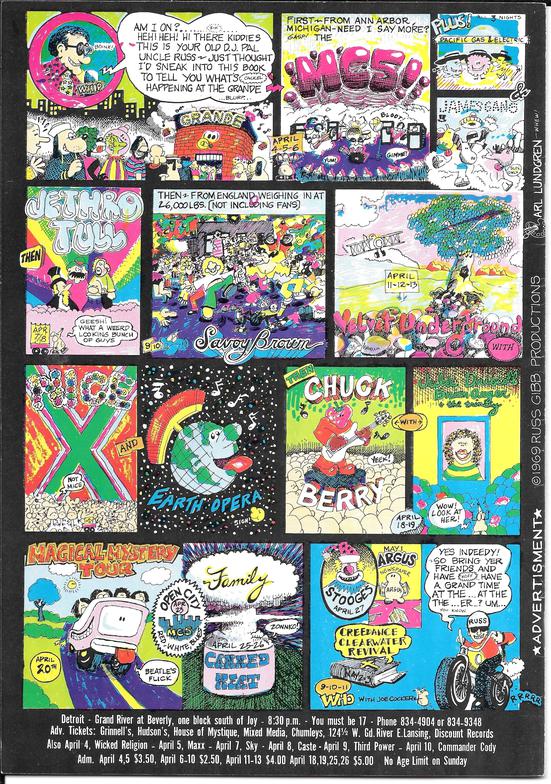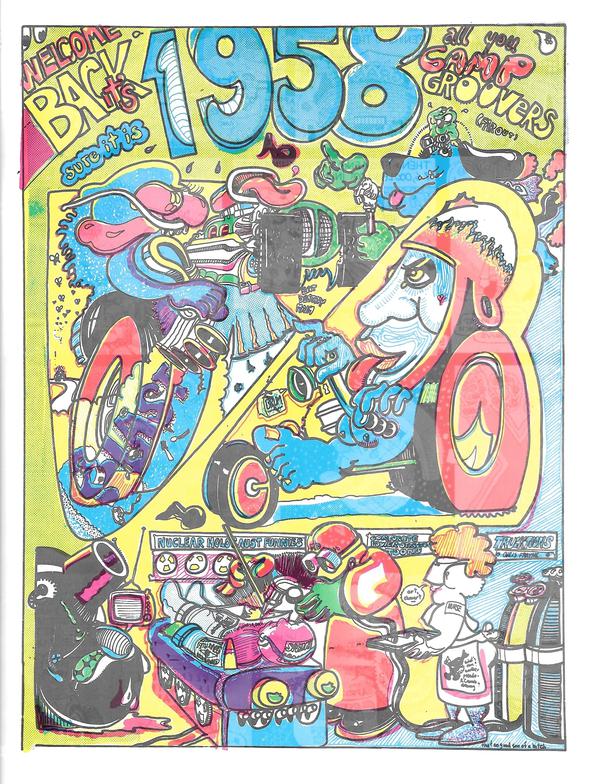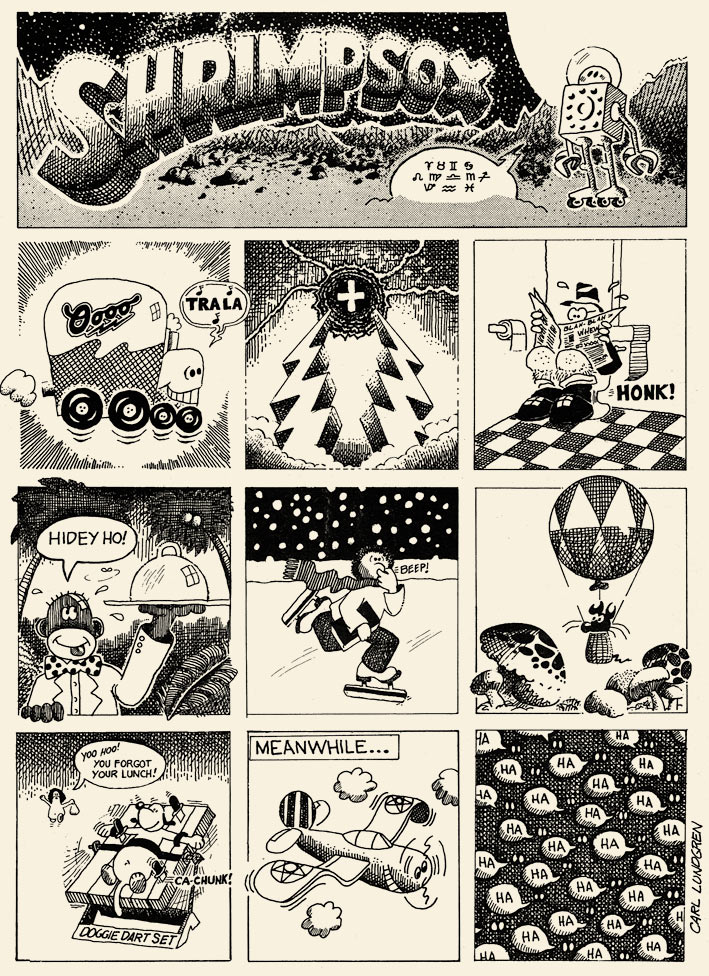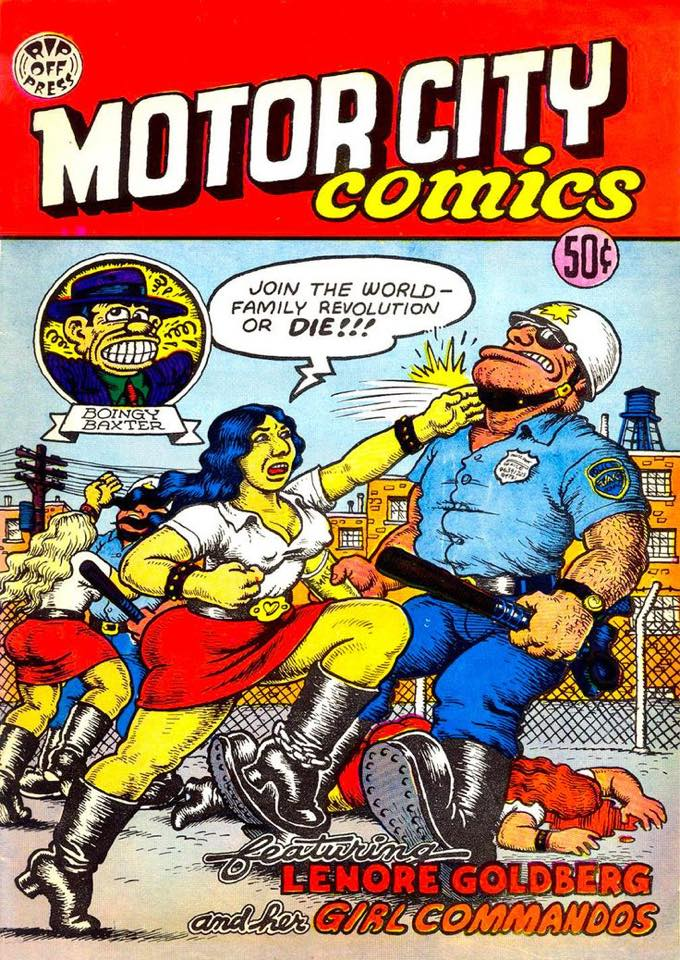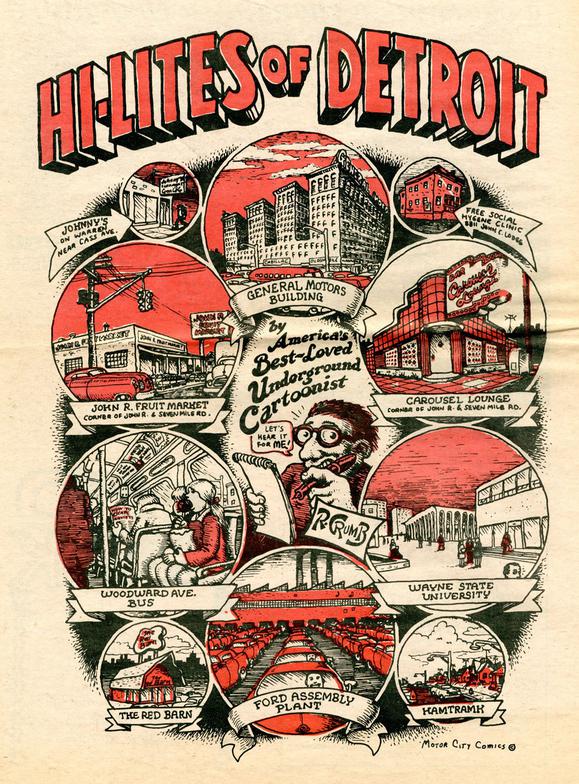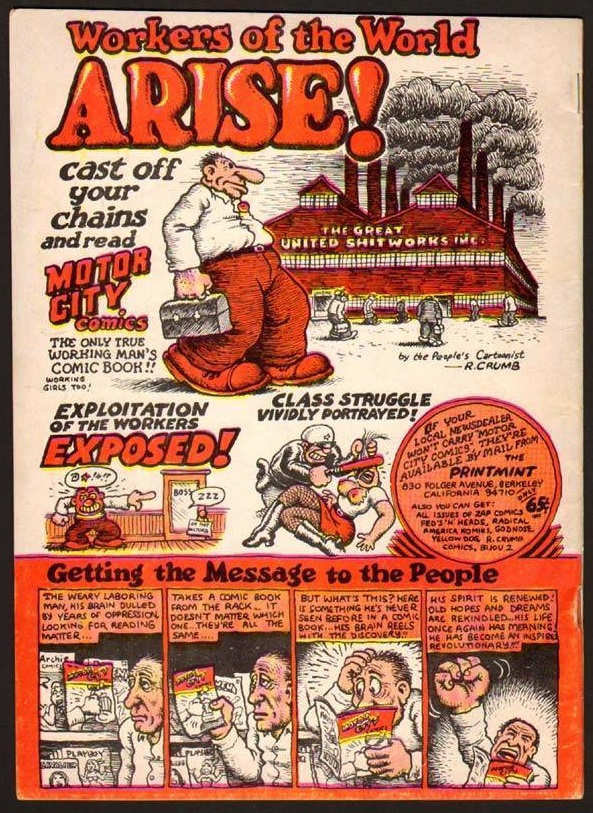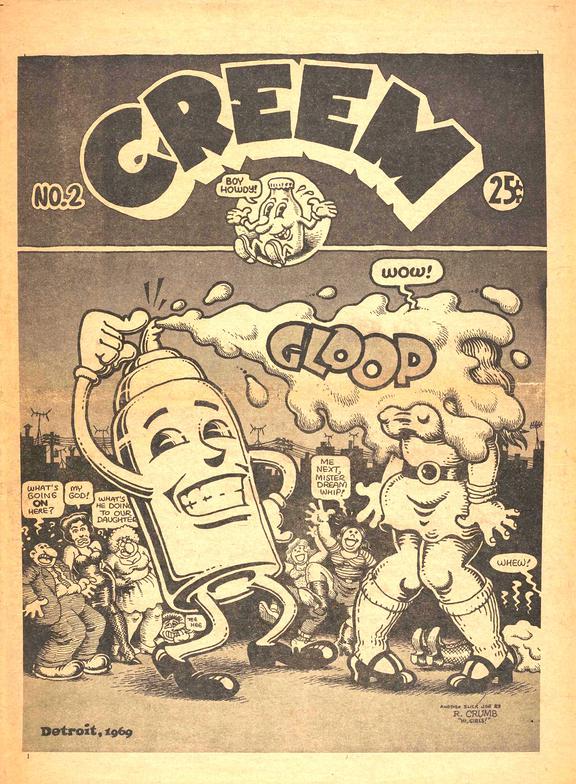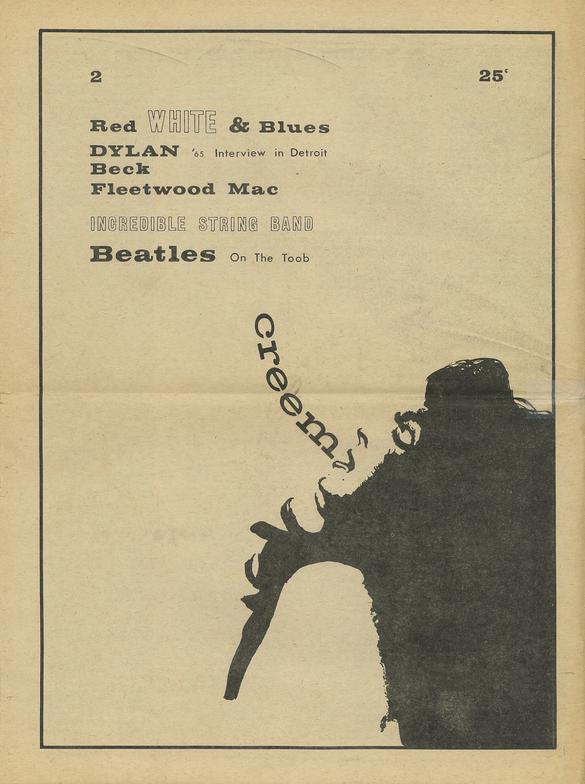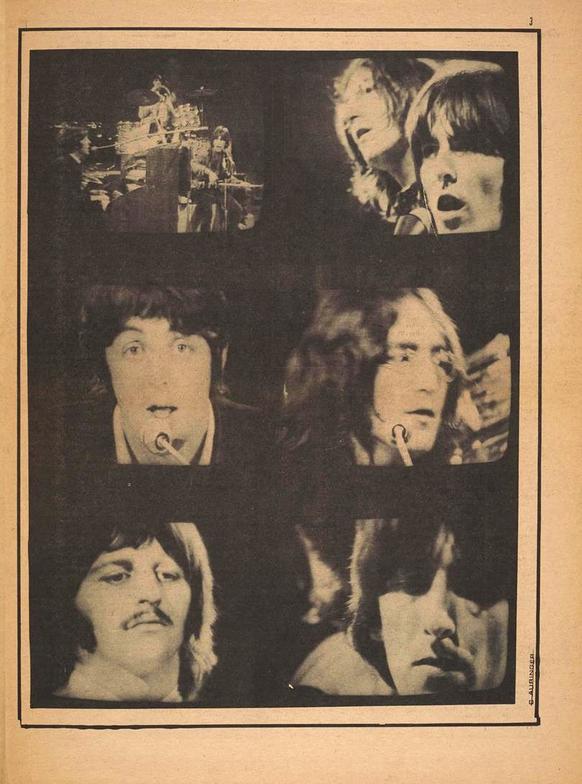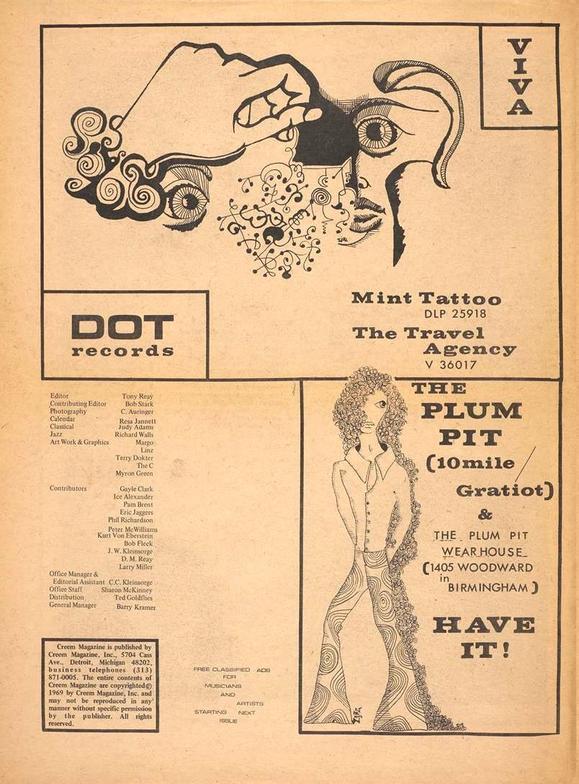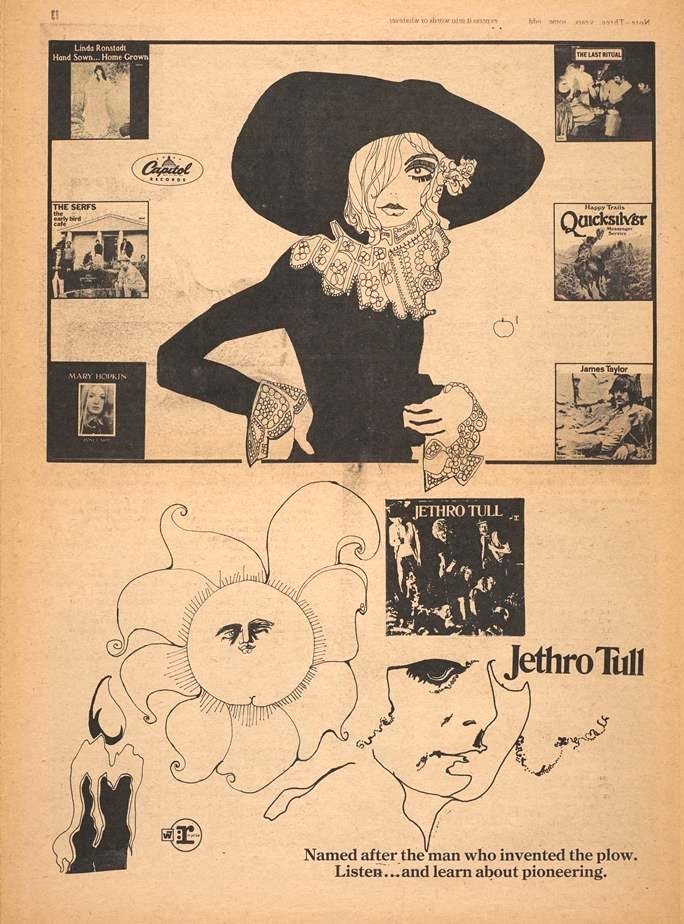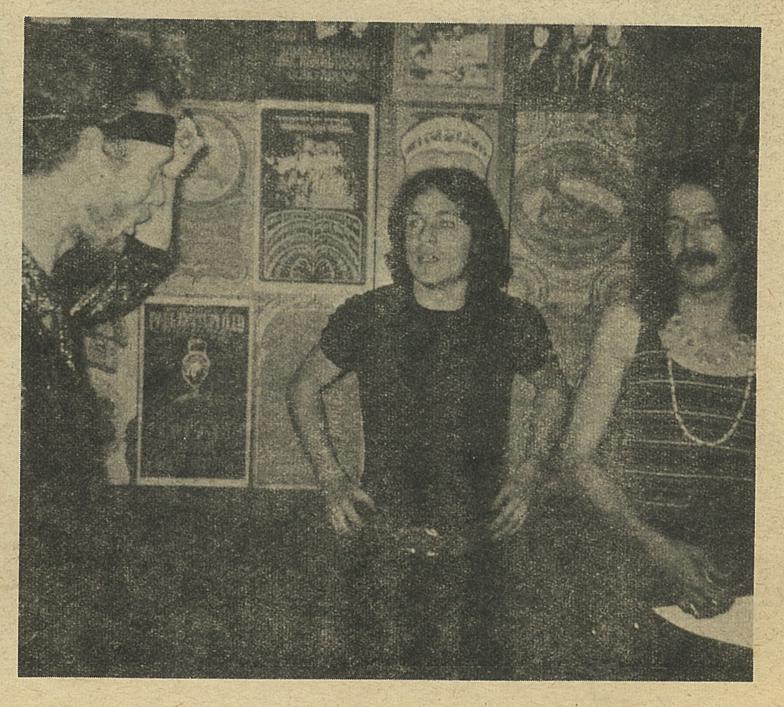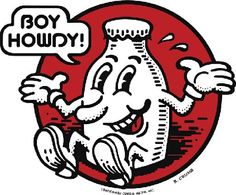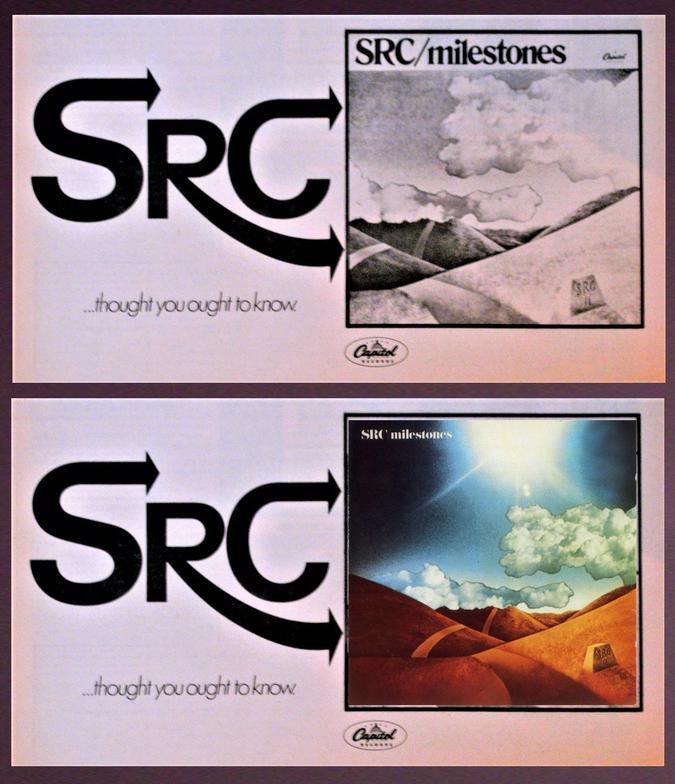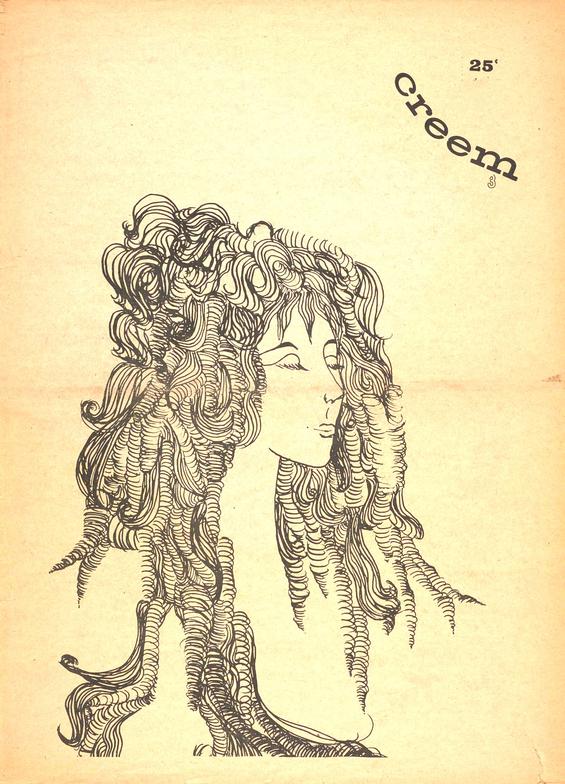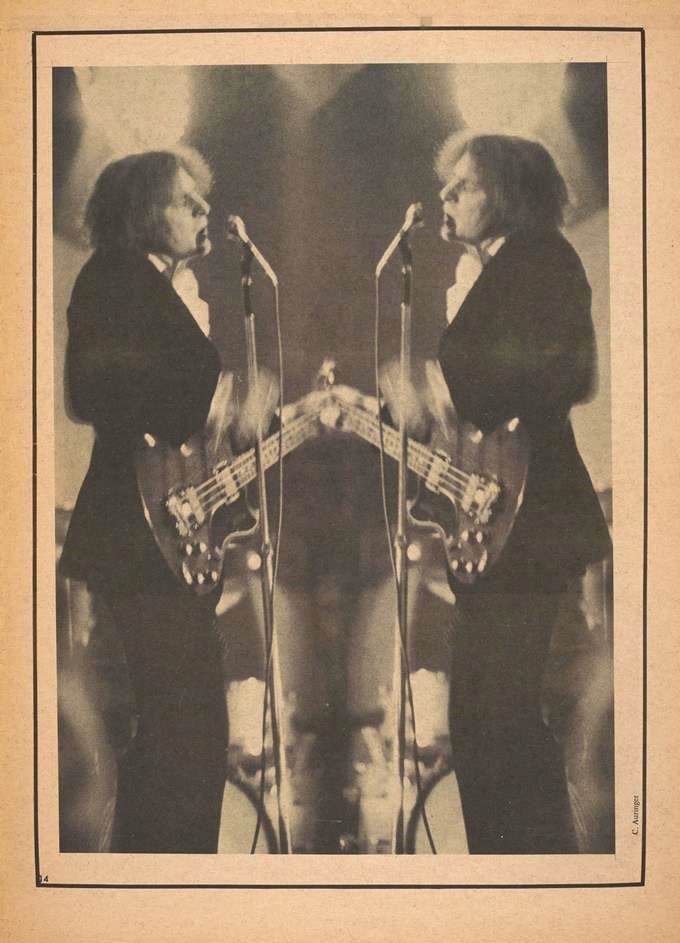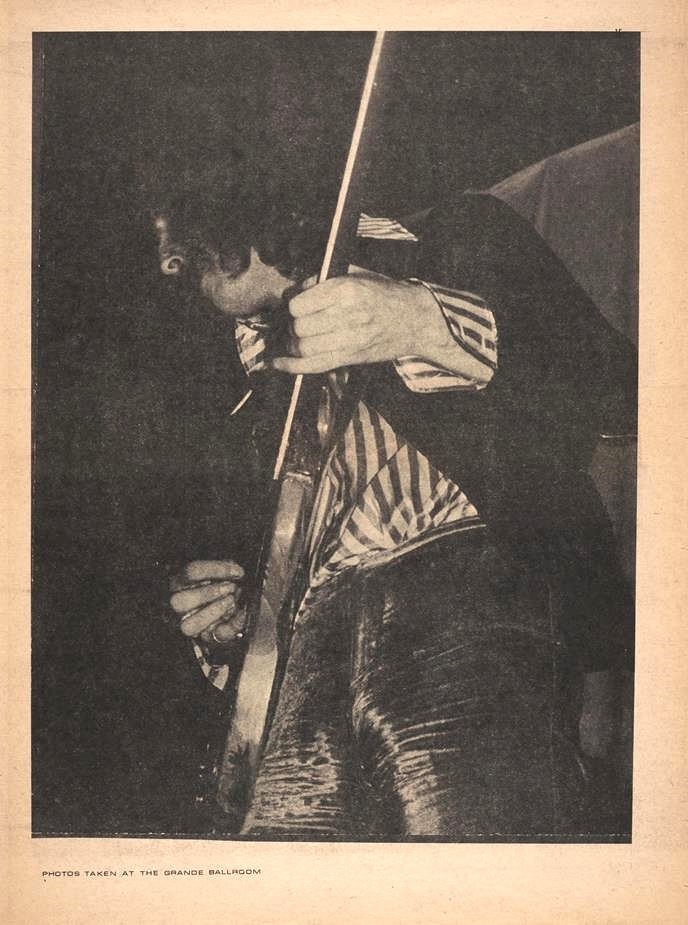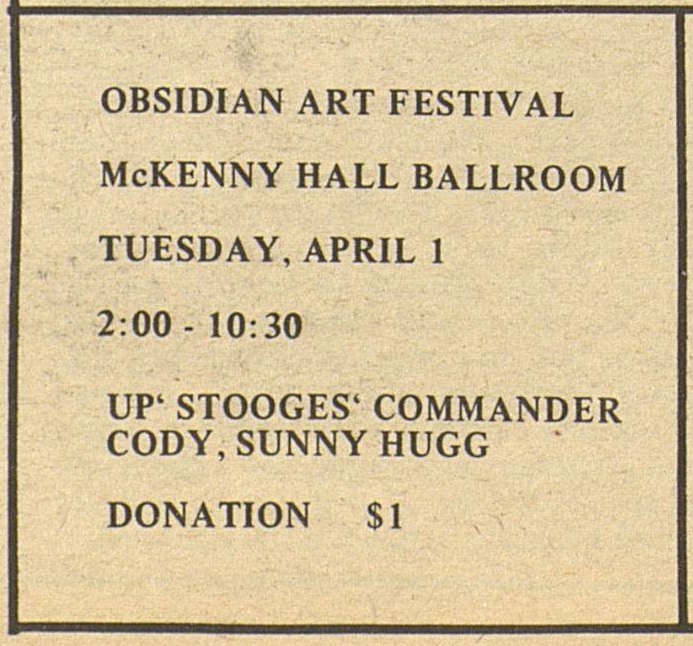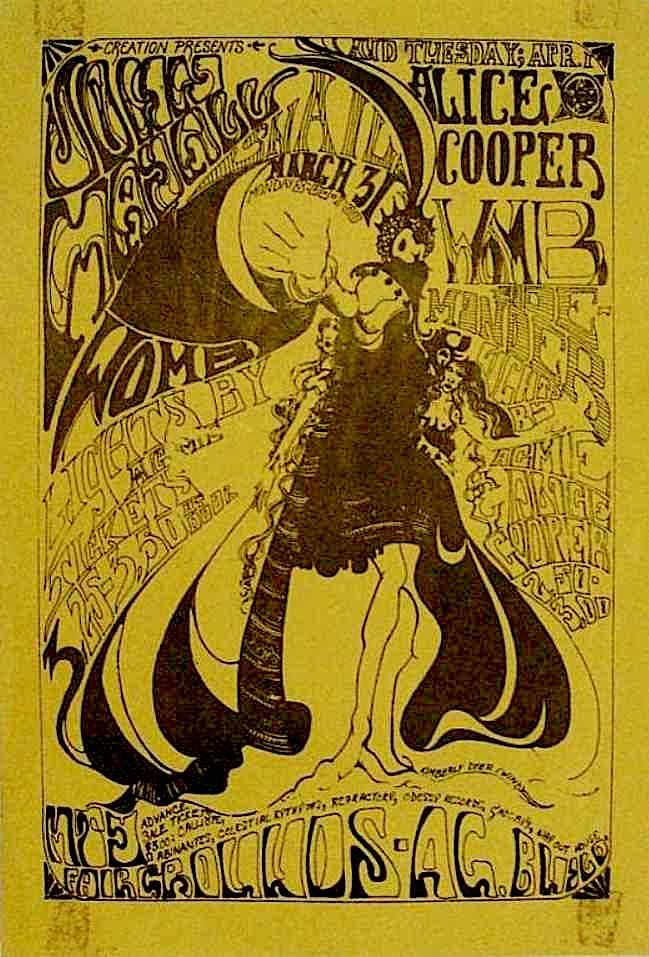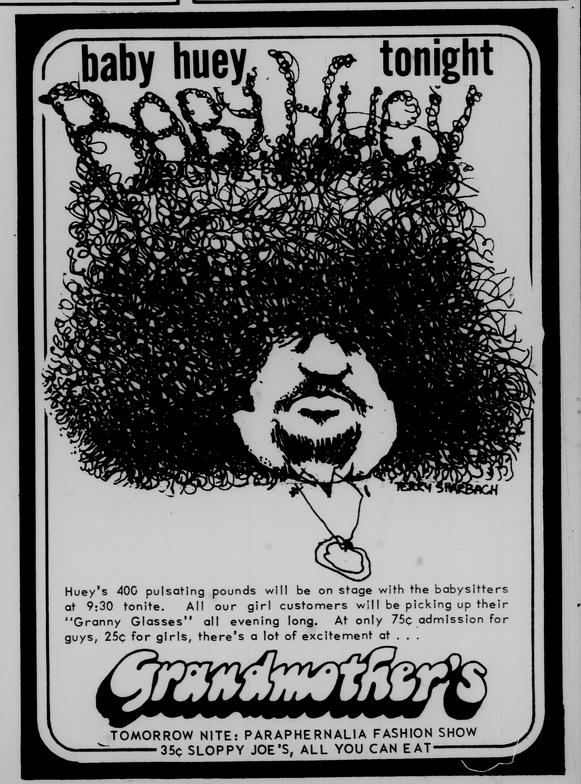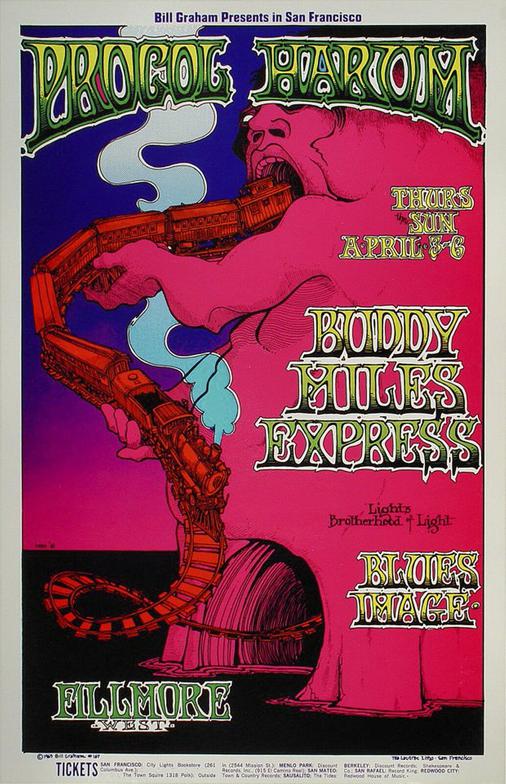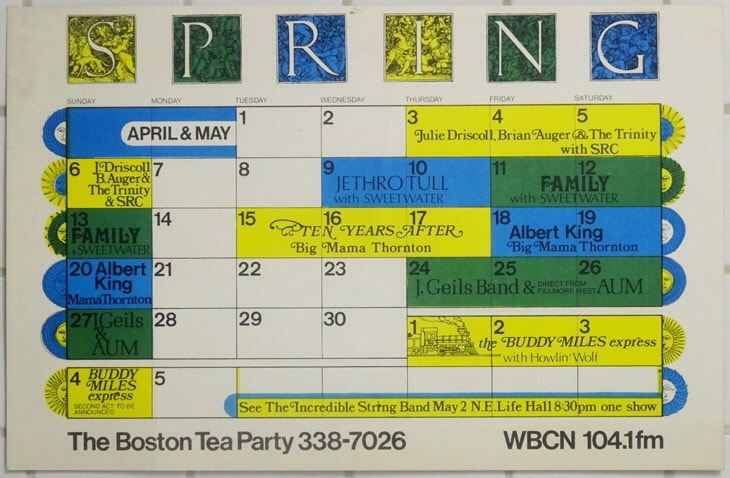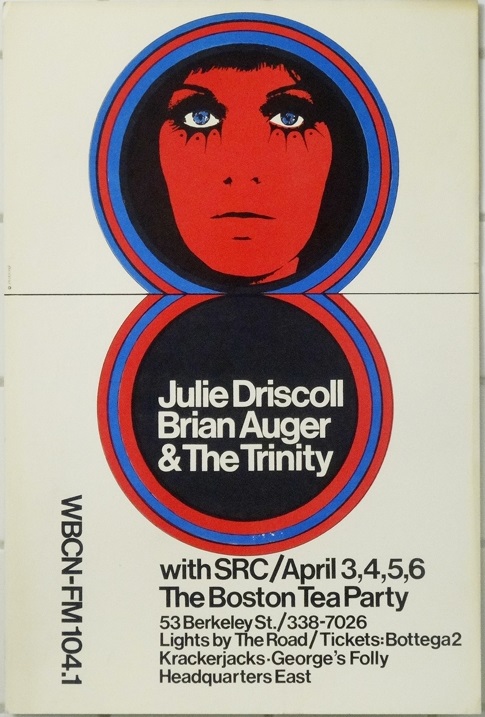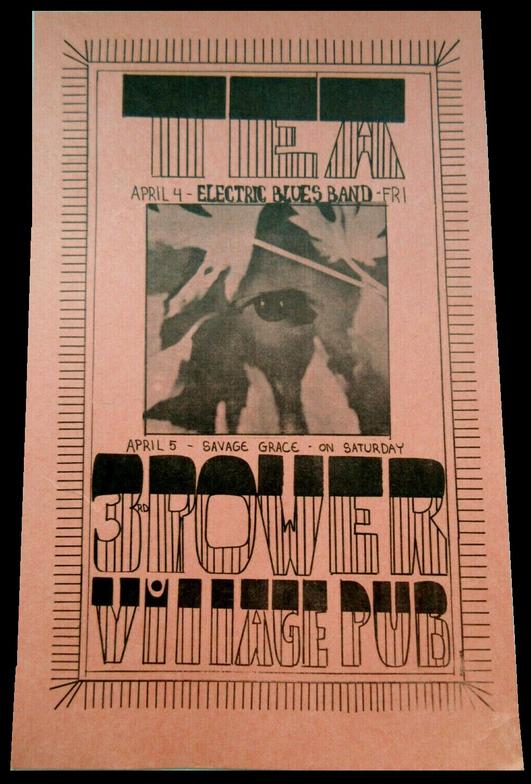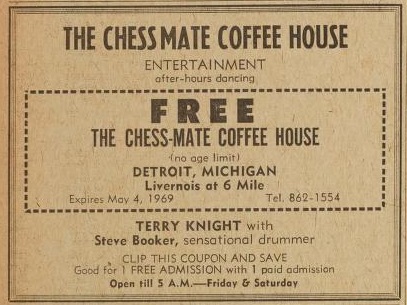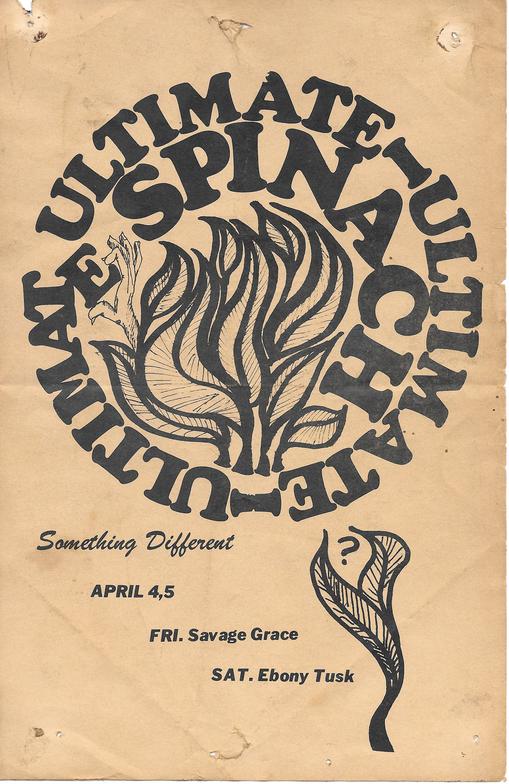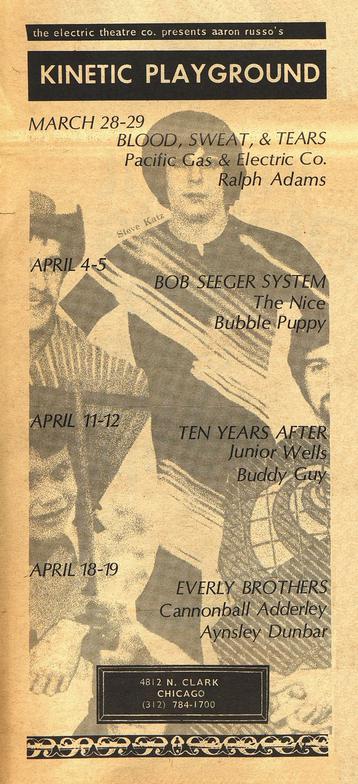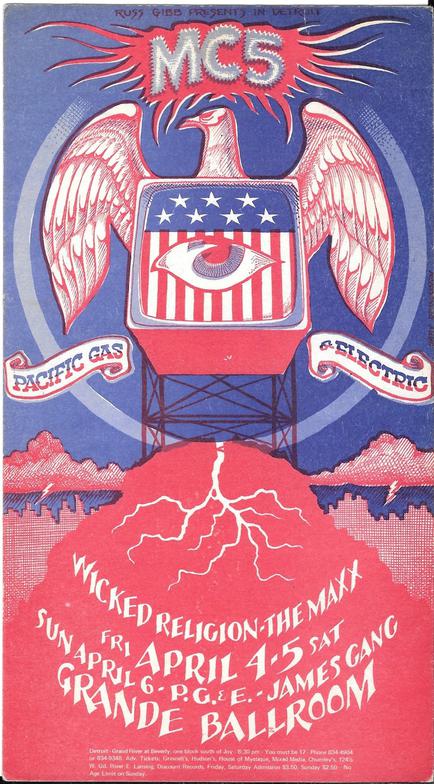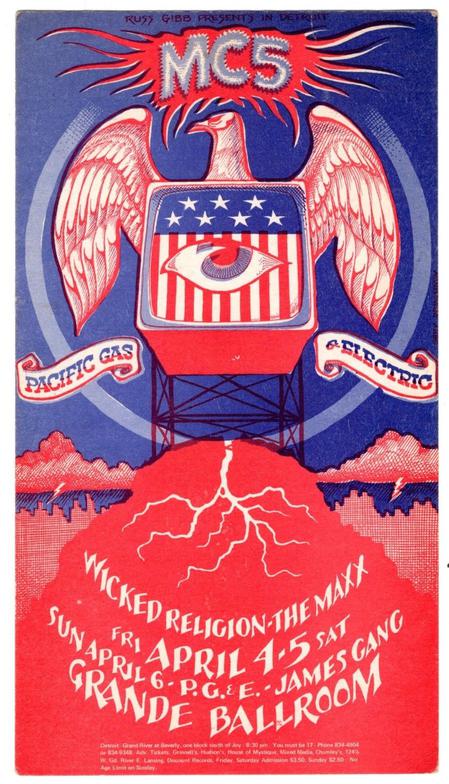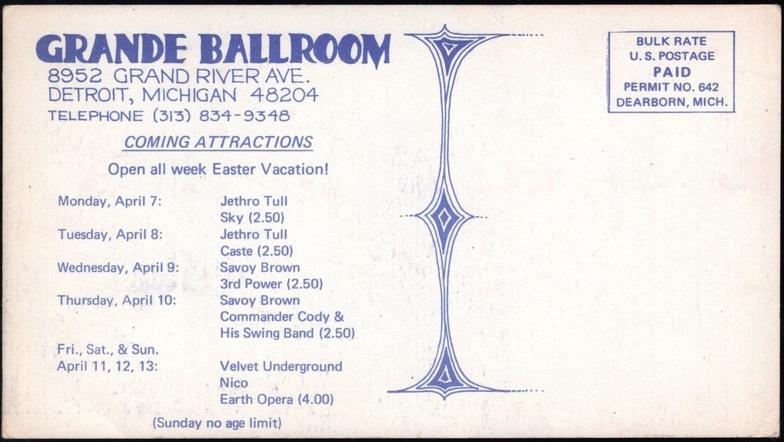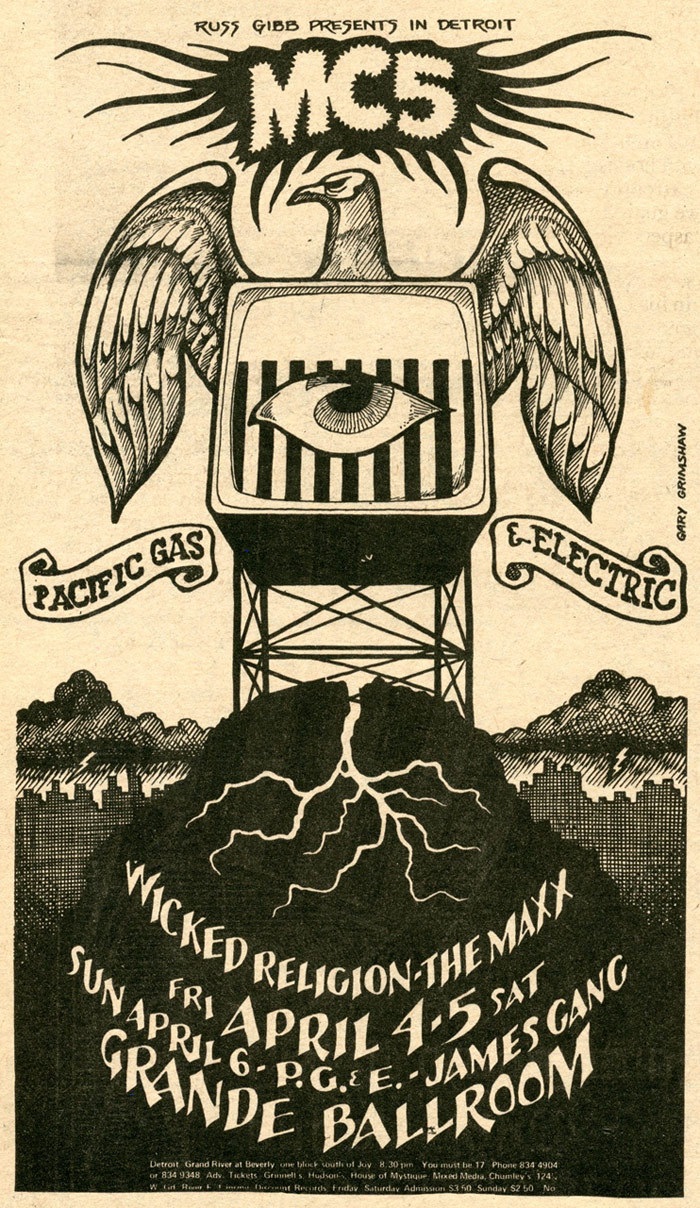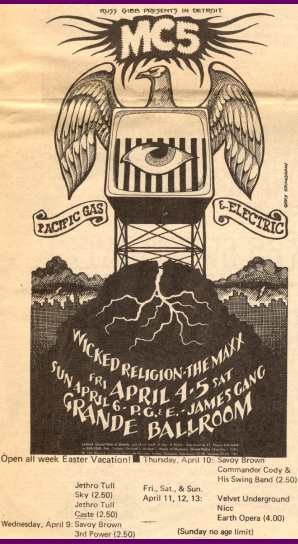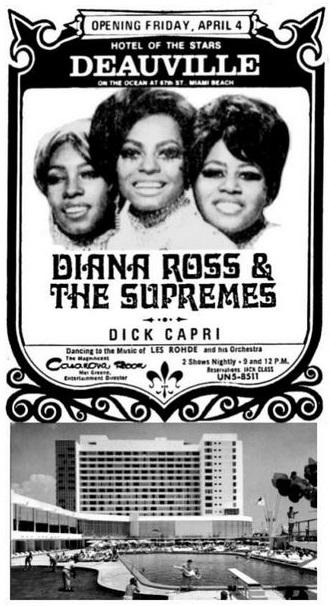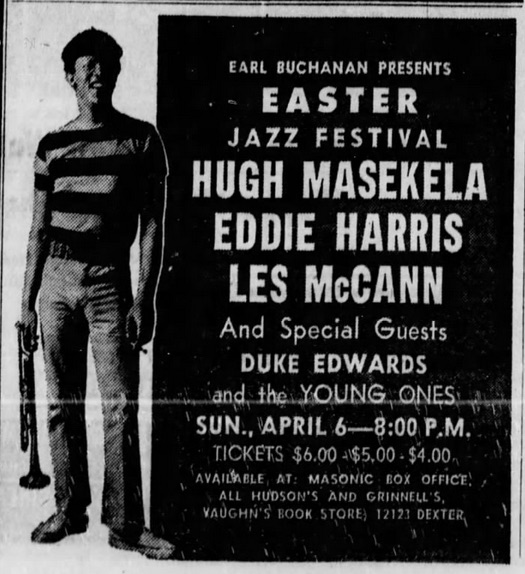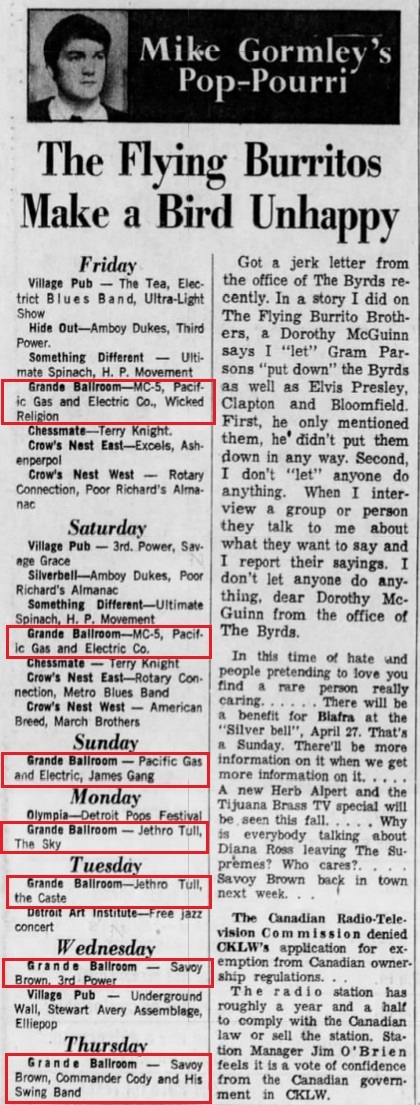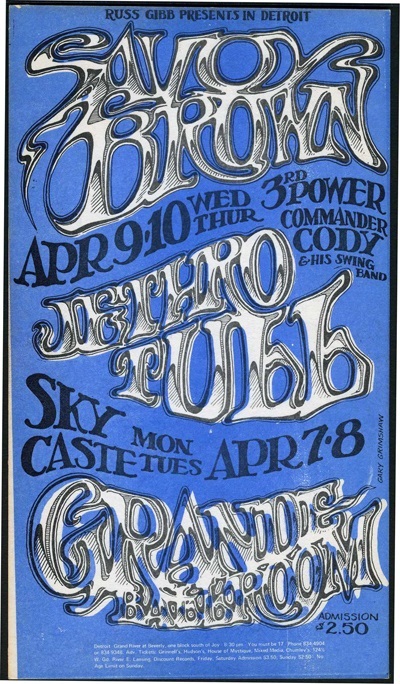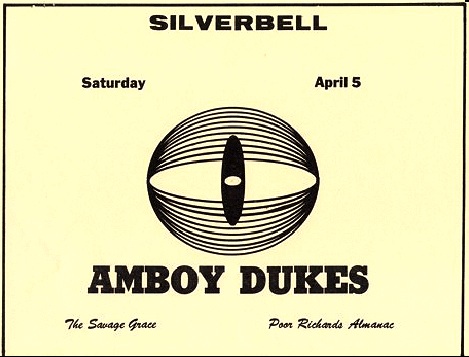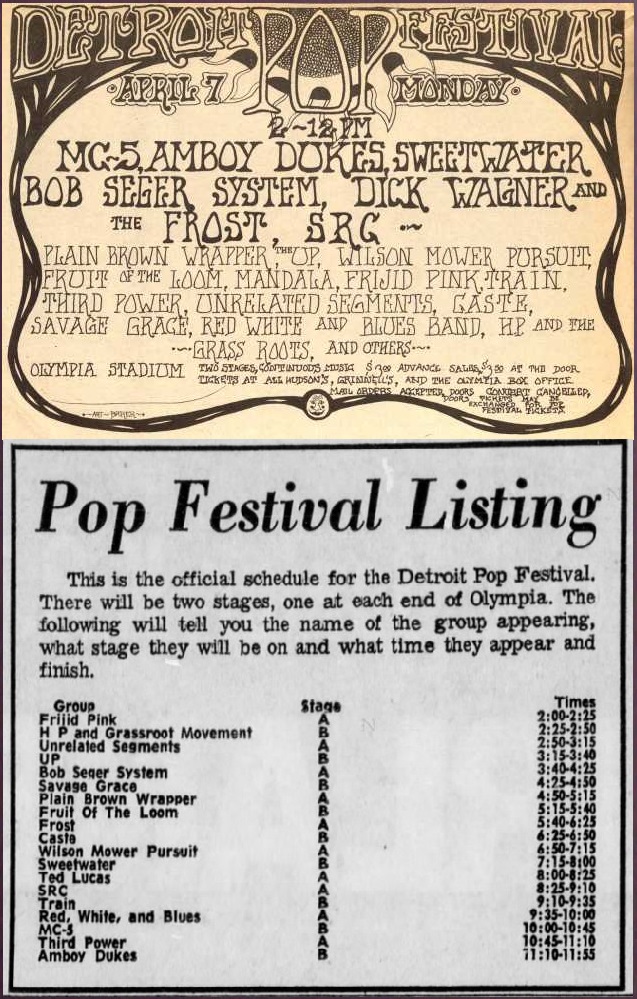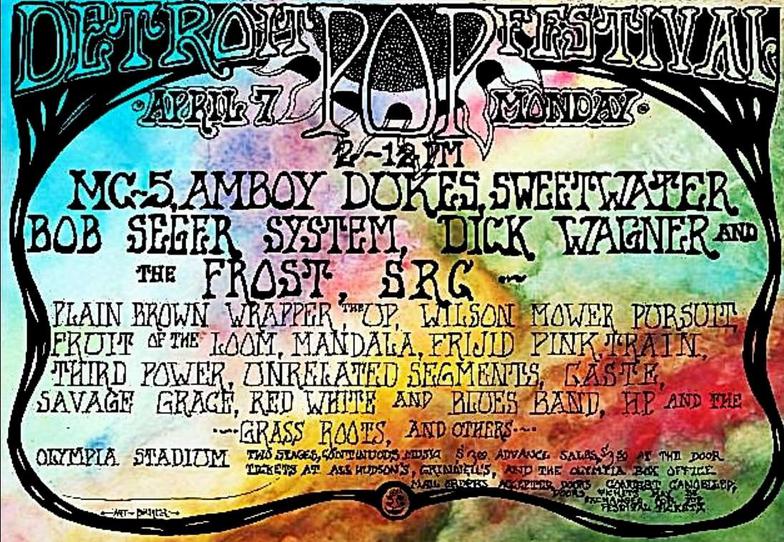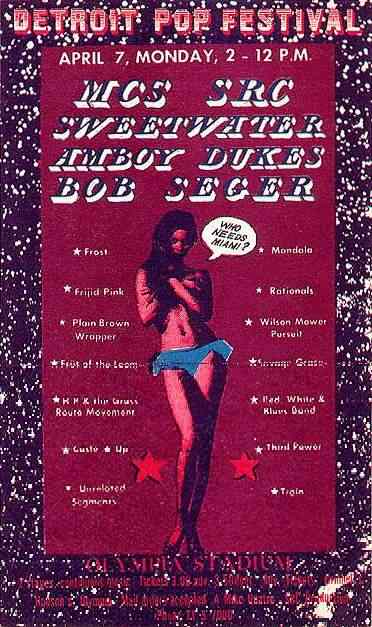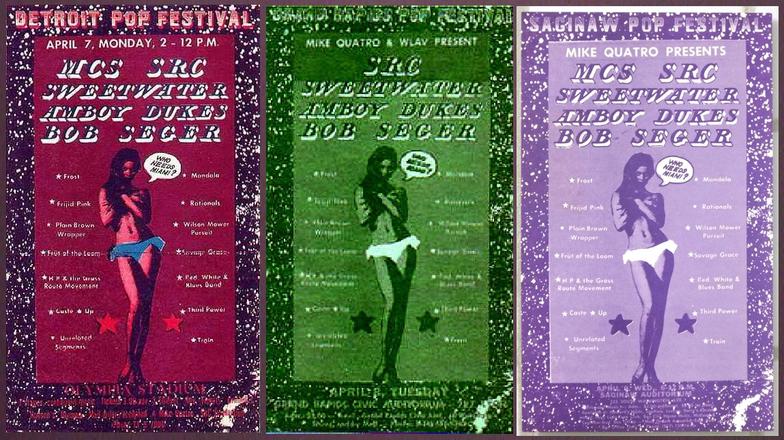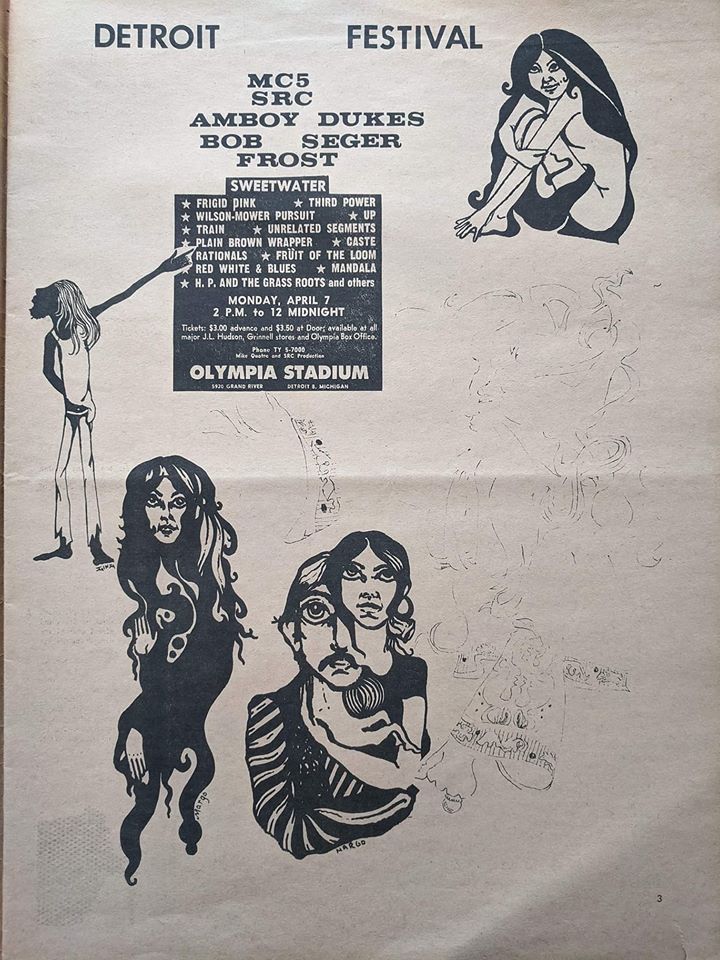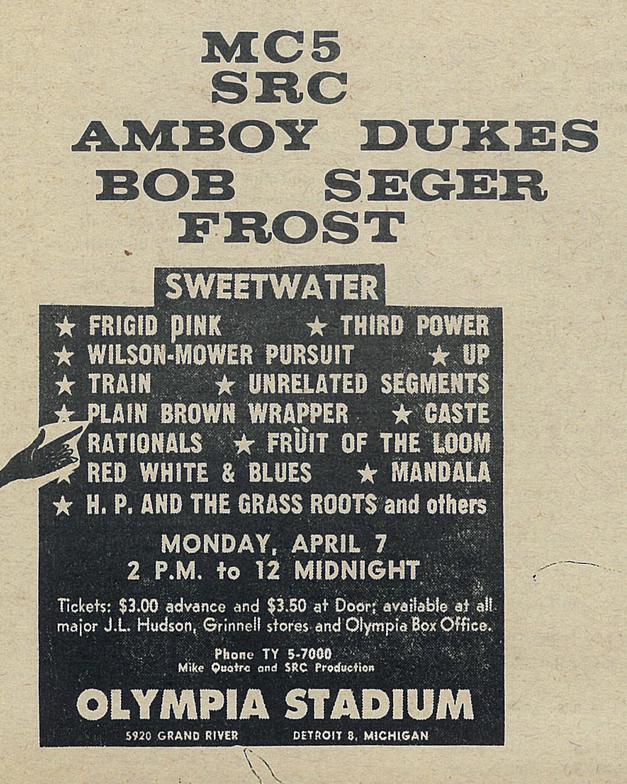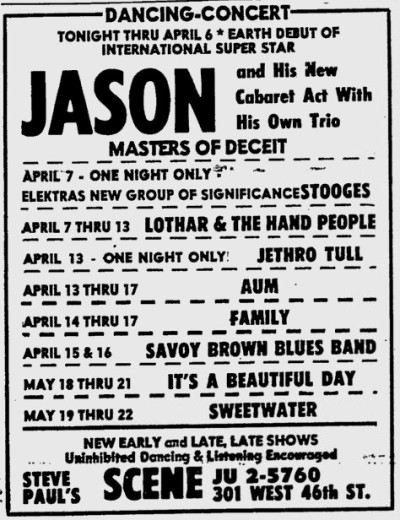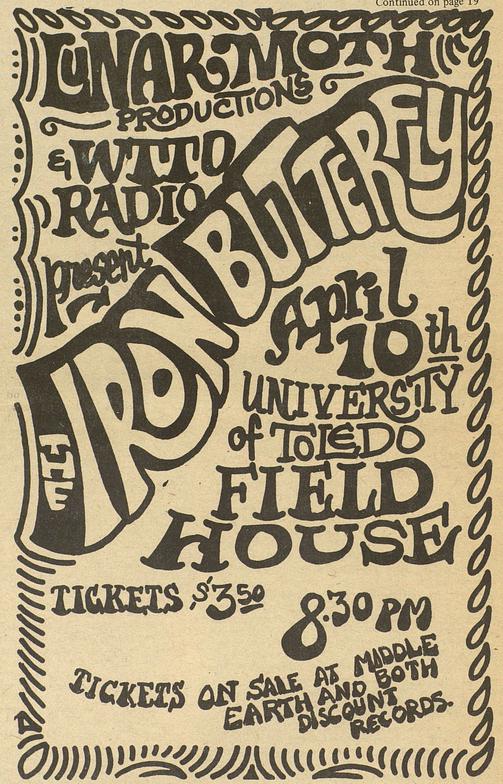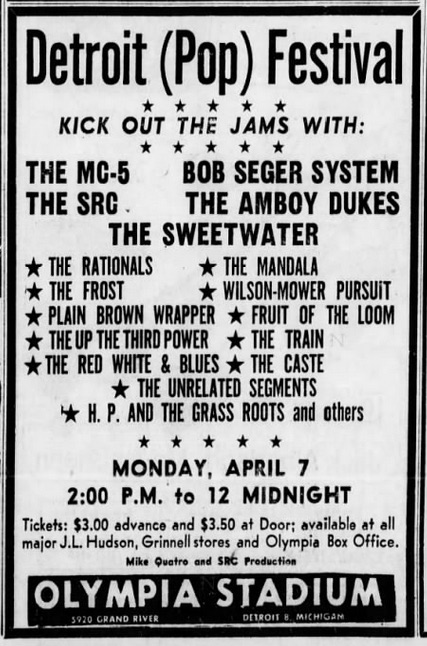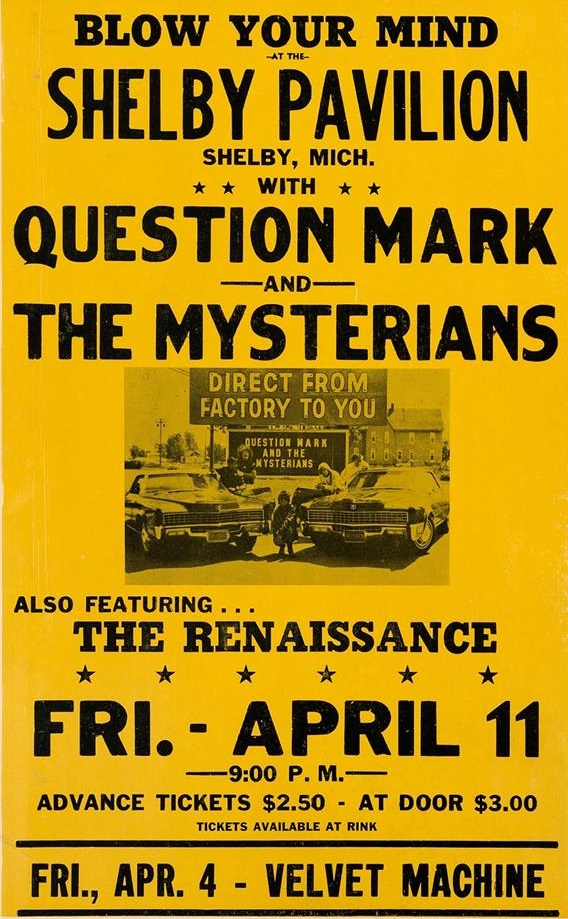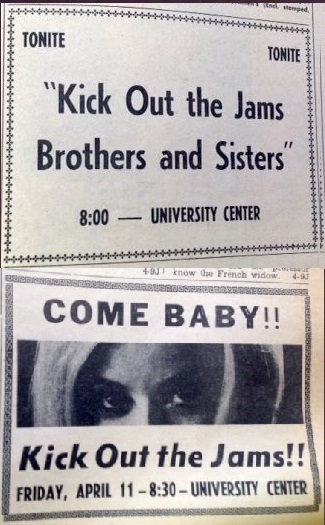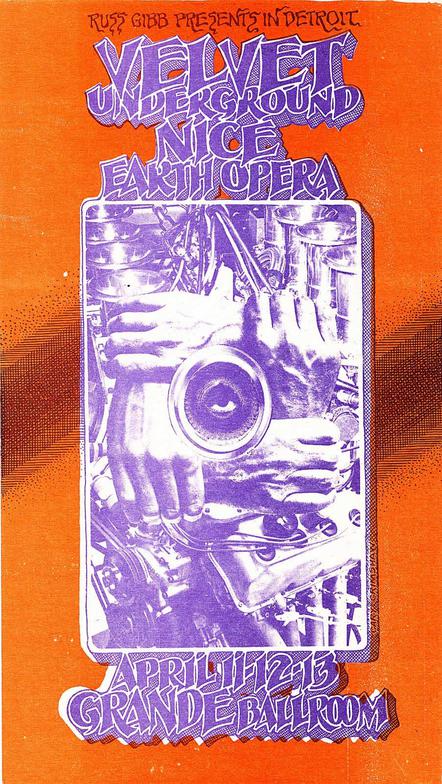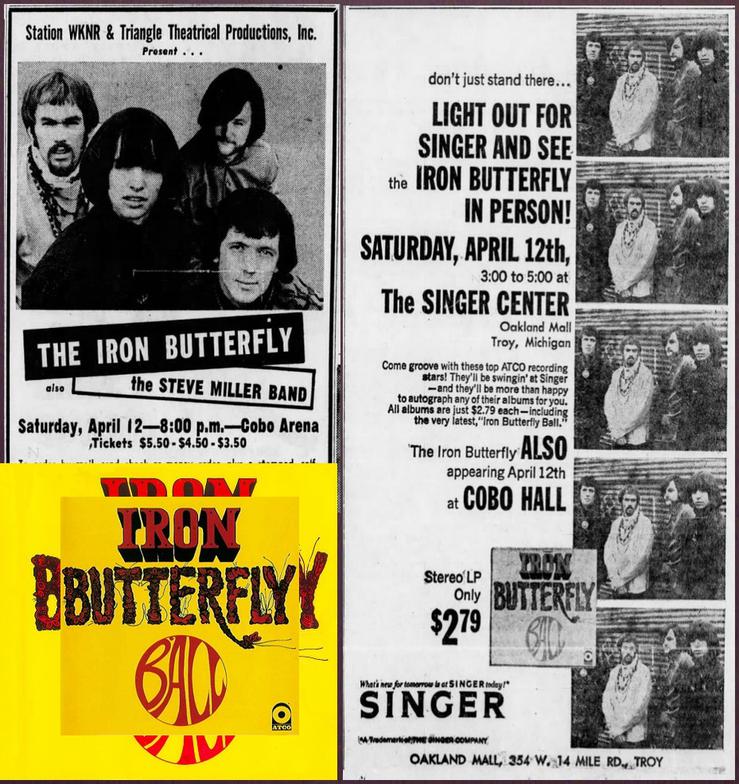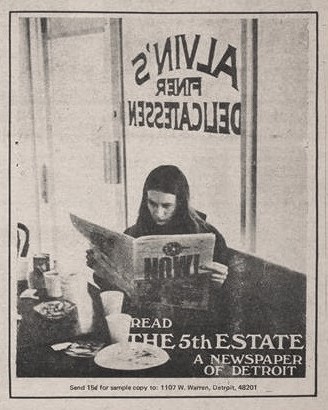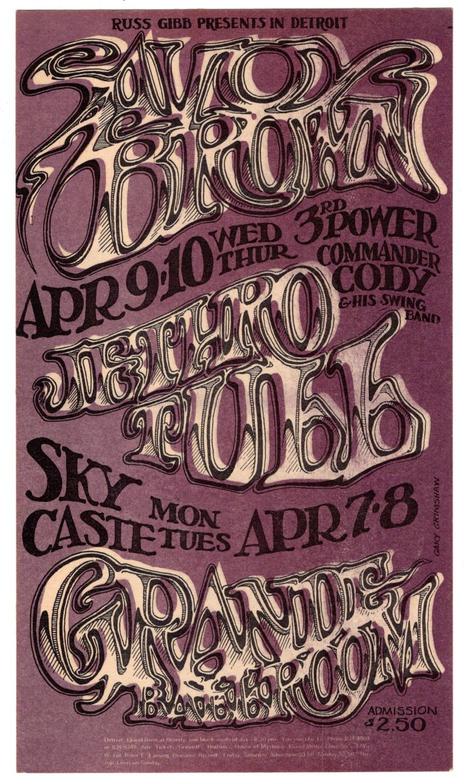Splatt Gallery
Double click here to add text.
Splatt Gallery's History of Michigan Concert Posters
Volume Five - 1969 - Page Six
**********************************************************
The back cover of the comic book “Tales From The Ozone” #1 was full-page ad by Carl Lundgren for shows at the Grande Ballroom in Detroit, Michigan. Here is a panel-by-panel breakdown:
The first panel has Russ Gibb, “Uncle Russ” announcing that he has snuck into this book to tell you what’s happening at the Grande. The second panel has the MC5, April 4-6, 1969, and the two smaller panels next to that are for the opening bands, Pacific Gas & Electric on the top with James Gang under that.
The first panel in the second row is for Jethro Tull, April 7-8. The middle panel has Savoy Brown, “from England, weighing in at 26,000 lbs (not including fans)” on the 9th and 10th.
The third panel in the second row has the Velvet Underground, April 11-13, “with”, (the next two panels), Nice and Earth Opera.
The third panel in the third row has “Then” Chuck Berry “with”, (the next panel), Julie Driscoll and Brian Auger & the Trinity, April 18-19. A mouse at the bottom of the panel says, “Wow! Look at her!”
The first panel in the last row is for a screening of the Beatles’ movie “Magical Mystery Tour” on April 20th. A white circle joining the first panel to the next one has “Open City” (a benefit for) with the MC5 and Red, White, Blues, April 23 inside the circle.
The conjoined panel has Family and Canned Heat, April 25-26, and the final panel has a clown with the Stooges, April 27, a May 1 Argus newspaper (benefit, that may not have happened), and a bible that proclaims “Creedence Clearwater Revival”, May 2-3 written on the spine.
Under the bible, there are the Who with Joe Cocker, (May) 9-10-11. Finally, Uncle Russ is on his motorcycle, signing off with “So, bring your friends and have a grand time at the…at the…er? Um…you know.”
The fine print along the bottom lists more of the support acts with their dates, Wicked Religion, Maxx, Sky, Caste, Third Power, and Commander Cody.
Along the edge, it says, Advertisement – 1969 Russ Gibb Productions, and Carl Lundgren – “Whew!”
The inside back cover of the Tales from the Ozone comic #1, April 1969, with artwork by Chris Frayne.
Here is one of the eight pages by Carl Lundgren from Tales from the Ozone #1. More of atypical comic book panel layout than on Gary Grimshaw’s pages, but still, a non-narrative, conceptual design. Both Lundgren’s and Grimshaw’s pages were similar to what other rock poster artists such as Rick Griffin and Victor Moscoso were contributing to other comix.
The contributions to Tales from the Ozone #1 by Robert Crumb, Gilbert Shelton, and Vaughn Bode were narrative stories, more in the tradition of the Tijuana Bibles and mainstream comic books.
Robert Crumb was a staff illustrator at American Greetings card company in Cleveland, Ohio, when he began taking LSD in June, 1965. He moved to San Francisco in January, 1967 and within a year, he was selling his “Zap Comix #1” book from a baby carriage on the streets of Haight-Ashbury. Crumb didn’t spend much time at home, even when he was in San Francisco he often stayed at hotels in the Mission district and made frequent visits to Chicago, New York, and Detroit.
He spent a period of time in Detroit in 1966 during his initial acid days, creating many of his characters, such as Mr. Natural, the Snoid, and Anglefood McSpade, and another extended stay at the beginning of 1969, assisting Carl Lundgren with his first comic book and coming up with material for his own “Motor City Comics”, also issued in the spring of 1969.
The inside back cover of Motor City Comics #1 by Robert Crumb, showing a fondness for the Carousel Lounge at John R. and 7 Mile, and a misspelling of the town of Hamtramck.
The outside back cover, "the only true working man's comic book!!"
The timing was fortunate, Robert Crumb was hanging out in Detroit in the spring of 1969, he needed some cash to get a shot for a case of the clap, and the second issue of CREEM magazine needed a cover illustration. Tony Reay paid Crumb $50 for it.
The second issue covered an events calendar for March 15-31, 1969.
The back cover of the second issue of CREEM Magazine, March 1969.
A page of Beatles photos by Charles Auringer in the second issue of CREEM magazine, March 1969. There was no accompanying feature article, no captions or explanation, but the shots certainly came from footage of the filming of the “Get Back/Let It Be” sessions in January 1969.
This is still more than a year before the release of the “Let It Be” album and feature film. There must have been a clandestine viewing of the raw footage somewhere, during which Auringer took these shots.
A page of art by Margo in Issue #2 of CREEM magazine, illustrating record company ads for Capitol Records and Reprise Records, and an ad layout with art by Linz with the staff box in the second issue of CREEM magazine.
A photograph of the British band Cream, backstage at the Grande Ballroom with a wall full of Gary Grimshaw posters that appeared in the second issue of CREEM magazine. March 1969. The photo, as with all photos in this issue, was taken by Charlie Auringer.
And from the cover illustration that Robert Crumb created for Issue #2, CREEM magazine found a mascot, a catch phrase, and a logo that it used for all the rest of the years to come, an instant identification that helped make it famous.
A rather striking Capitol Records ad, original and colorized, for the second album by SRC, “Milestones”, released in March 1969.
The front cover for Issue #3 of Creem magazine with an events calendar that begins on April 1, 1969. Cover art by Chuck Pike.
It is fairly well known that the magazine was named CREEM in honor of founder Tony Reay’s favorite band, the British supergroup Cream. Alas, the band broke up before the first issue hit the street. Photo by Charles Auringer of Cream bassist Jack Bruce in Issue #3 of CREEM magazine, completing the trio started in Issue #1 (Ginger Baker) and #2 (Eric Clapton).
Photo by Charles Auringer of Cream guitarist Eric Clapton in Issue #2 of CREEM magazine.
An ad for the Fifth Estate newspaper of Detroit in Issue #3 of CREEM magazine, April, 1969.
Newspaper ad for the Obsidian Art Festival at McKenny Hall in Ann Arbor, Michigan, April 1, 1969, featuring UP, Stooges, Commander Cody, and Sunny Hugg.
Poster by an unknown artist for Alice Cooper in Monterey, California, April 1, 1969.
Re-using the first of three illustrations of Baby Huey by Terry Sharbach, from back in February, this time is for an April 2, 1969 appearance at Grandmother’s in East Lansing, Michigan.
Poster by Greg Irons, Gary Grimshaw’s friend and benefactor during Grimshaw’s exile from Michigan, for a show at the Fillmore West in San Francisco, California, April 3-6, 1969, with Procol Harum and the Buddy Miles Express, featuring ex-Detroit Wheels guitarist Jim McCarty.
Poster with the Spring 1969 calendar of events at the Boston Tea Party in Boston, Massachusetts, with SRC, in a rare East Coast show, opening for Julie Driscoll, Brian Auger & The Trinity, April 3-6, 1969. The Buddy Miles Express, with ex-Detroit Wheels guitarist Jim McCarty, roll in a month later, April 1st through the 4th.
Poster for the Boston Tea Party in Boston, Massachusetts, with SRC in a rare East Coast show, opening for Julie Driscoll, Brian Auger & The Trinity, April 3-6, 1969.
Poster by an unknown artist for the Village Pub in Birmingham, Michigan, with Tea and the Electric Blues Band on April 4, 1969, and Third Power with Savage Grace on April 5th.
Newspaper ad and coupon for free admission to the Chess Mate Coffee House in Detroit, Michigan, with Terry Knight and drummer Steve (Muruga) Booker performing April 4-5, 1969.
Poster by an unknown artist for the only known Michigan appearance by the Boston, Massachusetts band Ultimate Spinach, at Something Different in Southfield, April 4-5, 1969, with Savage Grace on April 4th, and Ebony Tusk on April 5th as the opening bands.
Ultimate Spinach was one of the three original bands that were part of Alan Lorber’s “Bosstown Sound”, along with Beacon Street Union and Orpheus. By the time of these shows, however, the band was very different from the psychedelic group that recorded the first two Ultimate Spinach albums. When original band leader Ian Bruce-Douglas departed, Lorber still had a contractual obligation for a third record and he assembled a completely new unit that included guitarist Jeff “Skunk” Baxter.
Baxter was part of the group that played these Michigan shows. Shortly after, the band broke up and Baxter moved to Los Angeles, California for session work, later becoming a founding member of Steely Dan and after that joining the Doobie Brothers.
The lead track from the third album was an unexpected cover version of the 1964 hit by Detroit’s The Reflections.
Ultimate Spinach – (Just Like) Romeo & Juliet (1969)
https://www.youtube.com/watch?v=yIdcxmPQlcU&pp=QAA%3D
An ad for Aaron Russo’s Kinetic Playground in Chicago, Illinois, with the Bob Seger System appearing April 4-5, 1969, along with The Nice and the Bubble Puppy.
The 131st weekend for the Grande Ballroom, April 4-6, 1969 featured the return of Gary Grimshaw with his 58th poster for the venue, his first poster for the Grande in nine months (and one of his best). It was also the return of the MC5, in their first show back from their West Coast tour.
This image was originally produced only as a 4” x 7” postcard.
The MC5 headlined the first two nights, with Pacific Gas & Electric both nights, and Wicked Religion and the Maxx for one night each. Pacific Gas & Electric stuck around for the Sunday night show, opening for the James Gang.
The MC5 – Motor City is Burning (1969)
https://www.youtube.com/watch?v=-y871cCYOyU
The back side of the Gary Grimshaw postcard for the 131st weekend for the Grande Ballroom, April 4-6, 1969, with a schedule of events through April 13, 1969.
Newspaper versions of the Gary Grimshaw poster for April 4-6, 1969 at the Grande Ballroom, showing that black-and-white can be quite striking. One of the opening bands, The Maxx, originated in Lansing, Michigan, we’ve seen them in three of the Freak Out parties in East Lansing so far, but they had re-located to Detroit, where they released this single.
The Maxx – 200 Years (1969)
https://www.youtube.com/watch?v=ztgLPXQerA0
An ad for Diana Ross & the Supremes at the Deauville Hotel in Miami, Florida with two shows nightly, April 4-13, 1969. All Motown artists performing on April 4, wherever they may be, were asked by Berry Gordy to interrupt their performance to pay tribute to Martin Luther King for this first anniversary commemoration of his death.
Newspaper ad for an Easter Jazz Festival at the Masonic Temple in Detroit, Michigan, April 6, 1969. Two months later, Eddie Harris and Les McCann performed at the Montreux Jazz Festival in Switzerland, which was recorded and released as the album “Swiss Movement” which included the song that we once described as “the greatest song in the world”, and pretty much still stand by it, and yet, after all these years, we never knew there was live video of it, note-for-note, 0-M-Sweet Jesus!
Les McCann & Eddie Harris – Compared to What (1969)
https://www.youtube.com/watch?v=kCDMQqDUtv4
An entertainment column in a Detroit newspaper with a show at the Grande Ballroom every night of the week, April 4 – 10, 1969.
A poster for a string of mid-week shows at the Grande Ballroom, April 7-10, 1969 became Gary Grimshaw’s 59th poster for the venue. Jethro Tull headlined the Monday and Tuesday night shows, with support by Sky both nights and by Caste on the second night. Savoy Brown headlined on Wednesday and Thursday nights, with support by Commander Cody & His Swing Band and Third Power on both nights.
The image was produced as a two-sided postcard approximately 4″ x 7″, with the next week’s upcoming shows (Velvet Underground) on the other side. It appears that there were two colors used for this side.
And we have a recording from the April 9 show.
Third Power – I’m so Glad (live at Grande Ballroom 4-9-69)
https://www.youtube.com/watch?v=Wuxzq0DRs2E
Some words (like AMBOY DUKES) are so cool that just the simple text looks great. Ted Nugent named his band after an old Detroit R&B band, not knowing about Irving Shulman’s banned 1947 novel.
Poster/flyer for the Amboy Dukes with Savage Grace and Poor Richard’s Almanac at the Silverbell in Auburn Hills, Michigan on April 5, 1969.
Nineteen bands, all of them from around Michigan with the exception of Sweetwater from Los Angeles, were featured at the Detroit Pop Festival at the Olympia Stadium, on a Monday, April 7, 1969. Promoters Mike Quatro and Pete (not Punch) Andrews, set up two stages, at opposite ends of the stadium, so there was no break between bands, and despite the bad acoustics, the show was a huge success, about 16,000 people filled the stadium, The MC5, by accounts, were in top form, tossing White Panther buttons to the crowd, and a festival model was established.
The Detroit Pop Festival launched 1969 as a summer of music festivals in Michigan like never before, following up with Grand Rapids, Saginaw (twice), Kalamazoo, Saugatuck, Detroit (two more), Bay City, Petoskey, Mount Clemons, and Midland. And then, of course, there was that thing in Woodstock, New York.
Dave Baker, from Carl Lundgren’s circle of artist friends, made the hand-lettered newspaper ad and the listing below it shows the order of the bands.
A tie-dye background under Dave Baker’s ad for the Detroit Pop Festival at the Olympia Stadium, on a Monday, April 7, 1969.
Carl Lundgren’s poster for the Detroit Pop Festival, April 7, 1969. This is actually the reprint version due to being the highest quality image we can find, but we’ll post the original (which is not that different), along with the some of the multiple bootleg versions that promoters used for other festivals.
At first, we assumed that the “Who needs Miami?” speech bubble was just a dig against a competing festival, but you may recall that Lundgren’s cover of Tales of the Ozone #1 also had a Miami-referenced speech bubble, that asks, “Does this plane go to Miami?”, which suggests the animus goes further, probably due to the Miami Decency Rally that kept The MC5 out of Florida.
The original version of Carl Lundgren’s poster for the Detroit Pop Festival, along with two bootlegs that the promoters used for Grand Rapids (green) the following day, April 8, and Saginaw (blue) the day after that, April 9.
You can see that they were aware when they made the poster that the MC5 were not welcome in Grand Rapids, as indeed, city leaders had convinced the owners of the venue to take them off the bill.
This poster for the Detroit Pop Festival, April 7, 1969, was made by CREEM magazine artists, Linz and Margo, with the trademark “unfinished” look of their posters.
Close-up of the band list from the CREEM magazine poster for the Detroit Pop Festival on April 7, 1969.
The one Michigan group that was conspicuously missing from the three-day blitz of pop festivals in Detroit, Grand Rapids and Saginaw, was The Psychedelic Stooges. Having dismissed the MC5, Elektra Records turned its attention their other Ann Arbor band, getting them to drop the “psychedelic” from their name and sending them off to New York City to record their first album.
The label hired John Cale, who had just left the Velvet Underground, to produce the record. At this point the Stooges’ live set consisted of only five songs, each of which would become long improvised jams after the introductory verses, but Cale told them that five songs were not enough for an album, legend has it that Iggy and Ron Asheton came up with three new songs overnight.
The Stooges’ live debut in New York is considered, and was promoted as such, by an appearance later in the year after the album had been released, but we can see from the above bill, that they performed for one night at Steve Paul’s Scene on April 7, 1969, the same day as the Detroit Pop Festival. This was likely a warm-up for the recording session, for “Elektra’s New Group of Significance”, and quite possibly where the germ of the three new songs was formed.
The Stooges – 1969 (1969)
https://www.youtube.com/watch?v=ErUtp_pK4pk
Nice newspaper ad by an unknown artist for Iron Butterfly at the University of Toledo in Ohio, on April 10, 1969.
A newspaper ad for the Detroit (Pop) Festival at Olympia Stadium on April 7, 1969.
Poster by an unknown artist for Question Mark & the Mysterians at the Shelby Pavilion in Shelby, Michigan, April 11, 1969.
Teaser ad, or possibly a secret show by The MC5, in the April 11, 1969 issue of the South End, the campus newspaper of Wayne State University.
The 132nd weekend at the Grande Ballroom, April 11-13, 1969, featured Gary Grimshaw’s 60th poster for the venue. The Velvet Underground headlined all three shows.
This image was produced as the other side of the two-sided postcard shown before.
An interesting selection of opening acts for all three nights, The Nice with Keith Emerson from England, and Earth Opera from Boston, featuring David Grisman, Peter Rowan and Billy Mundi. Both groups followed up their Grande Ballroom shows with an appearance at a local area club, The Nice played the Clawson Hideout, and Earth Opera went out to the Canterbury House in Ann Arbor.
The Nice – America (1968)
https://www.youtube.com/watch?v=BLVEIGsG1Og
On April 12, 1969, Iron Butterfly performed at Cobo Arena for their fifth Michigan appearance, on the heels of their third album release, with an in-store appearance at a record store in the Oakland Mall. Note the album price.
Volume Five - 1969 - continues - HERE


